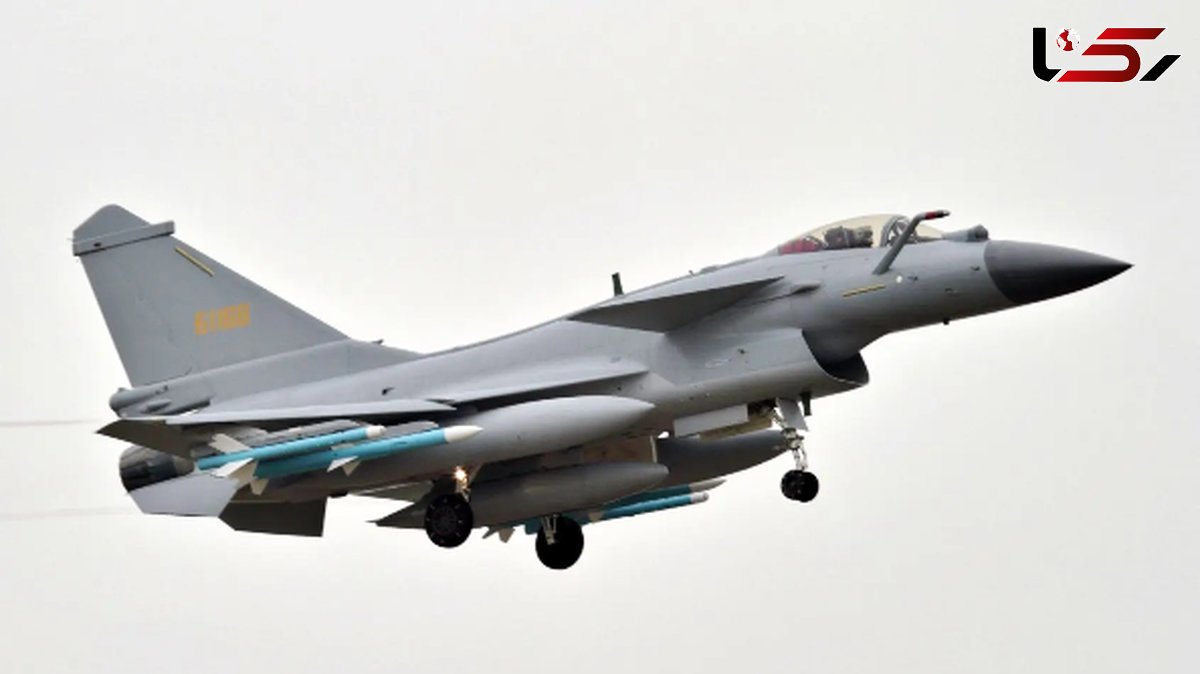J-10 Fighter vs. Israeli Jets: Capabilities, Specifications, and Combat Potential
Rekna Political Desk: Recent rumors regarding the arrival of Chinese J-10 fighter jets in Iran have reignited interest in Tehran’s potential plans to strengthen its air force. However, these reports were swiftly denied. This article provides an in-depth overview of the J-10’s specifications, its potential integration into the Iranian Air Force, and its capabilities in hypothetical engagements against Israeli fighter jets.

According to reports, several Chinese J-10 jets allegedly flew from Pakistan to Shiraz Air Base. These claims were later confirmed to be false, but they drew attention due to prior media coverage suggesting Iran’s interest in acquiring advanced Chinese fighter jets to bolster its aerial capabilities.
Introduction to the Chengdu J-10
The Chengdu J-10, also known as the “Vigorous Dragon,” is a fourth-generation-plus (4.5) multi-role fighter developed by the Chengdu Aircraft Corporation. Entering service in the late 1990s, the single-engine, lightweight aircraft is designed for all-weather operations with primary roles including air superiority, ground attack, and Suppression of Enemy Air Defenses (SEAD). Its delta-canard design and fly-by-wire system provide high maneuverability at both high and low speeds.
The following technical specifications are based on authoritative sources, including defense publications and official data, and are followed by an analysis of the J-10’s air combat potential against Israeli fighters such as the F-16, F-15, and F-35.
Key Specifications of the J-10C (Latest Export Variant)
| Feature | Specification |
|---|---|
| Crew | 1 |
| Length | 16.9 m |
| Wingspan | 9.8 m |
| Height | 5.7 m |
| Wing Area | 37 m² |
| Empty Weight | 9,750 kg (J-10A); ~10,000 kg (J-10C) |
| Max Takeoff Weight | 19,277 kg |
| Engine | 1 × WS-10A-3 turbofan (89.17 kN dry, 144 kN with afterburner); export variants may use AL-31FN |
| Max Speed | Mach 1.8 (~2,200 km/h at altitude), some sources report up to Mach 2.2 |
| Combat Radius | 1,100 km (with external tanks); Ferry Range 1,850 km |
| Service Ceiling | 18,000 m |
| G Limits | +9G / -3.6G |
| Radar | KLJ-7A AESA, detection range 170 km for large targets |
| Armament | 1 × 23 mm cannon, up to 5,600 kg on 11 hardpoints, including PL-15 BVR missiles, PL-10 short-range IR missiles, LS-6/KD-88 air-to-ground missiles, guided bombs, external fuel tanks |
| Key Features | High maneuverability via canard design, advanced missile integration, ECM compatibility |
The specifications of the J-10 make it a highly agile and efficient fighter, well-suited for operations in contested environments. Over 600 units are operational within the People’s Liberation Army Air Force (PLAAF) of China, and export versions have been supplied to countries such as Pakistan (J-10CE).
Air Combat Capabilities Against Israeli Fighters
The J-10’s air combat potential, both in Beyond Visual Range (BVR) and Within Visual Range (WVR) scenarios, is evaluated through simulations, joint exercises, and expert analysis. As a 4.5-generation fighter equipped with an AESA radar and PL-15 missiles, the J-10 is competitive in BVR engagements, while its WVR performance heavily depends on maneuverability. Comparisons with the core fighters of the Israeli Air Force—F-16, F-15, and F-35—are as follows:
Versus F-16 Fighting Falcon (4th Gen, multi-role, single-engine):
-
The J-10 and F-16 are similar in size and role, both being lightweight and multi-role fighters.
-
The J-10C, with the more powerful AL-31FN engine (higher thrust than the F110 in F-16V) and a superior thrust-to-weight ratio (~1.1 vs. 1.0), exhibits enhanced flight performance.
-
The AESA radar of the J-10 (KLJ-7A) is comparable to the F-16V’s APG-83, and the PL-15 missile offers longer range than the AIM-120C.
-
In BVR engagements, the two aircraft are relatively equal, while in WVR, the J-10’s canard design can provide an advantage. Simulations indicate that the J-10C can outperform the F-16 in complex scenarios, particularly when integrated with electronic warfare systems.
-
However, the F-16’s extensive operational experience (over 4,500 units produced) and broader weapons ecosystem give it an edge in real combat situations.
Versus F-15 Eagle (4+ Gen, air superiority, twin-engine):
-
The F-15 is heavier (empty weight 12,700 kg), with longer range (5,700 km with tanks) and a more powerful radar (AN/APG-63(V)3, >200 km detection range).
-
The F-15 carries more fuel and armaments (up to 7,300 kg) and has an impeccable air-to-air record (104 victories without a loss).
-
The J-10 is lighter and more maneuverable, but the F-15’s dual engines (total thrust 236 kN) and longer-range missiles give it the advantage in both BVR and WVR engagements.
-
Analysts generally consider the J-10 more comparable to the F-16 than the F-15, with real-world engagement odds favoring the F-15 (~70-30).
Versus F-35 Lightning II (5th Gen, stealth, multi-role):
-
The F-35 dominates BVR engagements due to stealth technology (RCS <0.005 m²) and advanced sensors (DAS and EOTS for 360° awareness), while the J-10 (RCS ~1 m²) would be detected first.
-
The F-35’s speed (Mach 1.6) is slightly lower, but its service ceiling (15,240 m) and range (2,200 km) are comparable to the J-10.
-
In WVR dogfights, the J-10’s higher G-limit can provide some advantage, but the F-35’s helmet-mounted display and AIM-9X missiles negate this.
-
Analysts rate the F-35 as significantly superior, particularly in networked warfare and electronic combat, with the J-10 only having realistic chances in close-range scenarios without stealth considerations (overall odds ~20-80 in favor of the F-35).
Send Comments